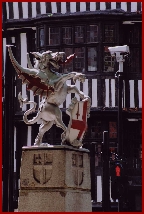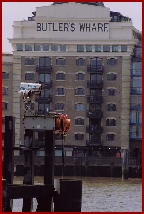 | |||||||||||||||||||||||||||||||
Doktor Jons Guide to the "Use and Application of CCTV" | |||||||||||||||||||||||||||||||
 |  | ||||||||||||||||||||||||||||||
 | |||||||||||||||||||||||||||||||
 | |||||||||||||||||||||||||||||||
The art of CCTV resolution, or reading between the lines? Just prior to the G20 summit here in London, this CCTV news story caught my eye on www.guardian.co.uk. At this point, I should perhaps mention that they've been happily using them for quite some time now, that is until the civil servants at the Department of Transport decided that with some new legislation coming into effect on the 1st of April, the cameras were no longer compliant and so would have to be switched off. So that's about 60 street surveillance cameras deemed to be unfit, and condemned to be switched off, on the very day that all the worlds top brass buttons roll into town, amid one of the largest security operations ever seen in the capitol. All makes sense so far ...? Well no actually, there was something rather odd about this story, repeated as it was across numerous news and media organisations; so I decided to do a bit of research to try and find out what all the fuss was about. Now the first thing I discovered was the new legislation related specifically to the use of CCTV cameras, in order to issue Penalty Charge Notices (PCN's) for traffic violations. Now unless I'm misreading the situation, the cameras were ordered to be turned off, simply because they were deemed to be non compliant with the specification laid down for cameras, intended to be used for policing vehicle offences. I could be wrong here, but it doesn't actually follow that if the cameras cannot be used for issuing PCN's, then they can't in the meantime be used for something else, such as Public Space Surveillance, where no such mandatory specification actually exists. So at this point, it becomes clear that the cameras could in theory continue to be used for street monitoring / public safety, but they cannot be used lawfully for issuing tickets, or what according to the great British public, is euphamistically termed "revenue generation". That then conveniently brings me on to the next point of contention, which actually relates to the new legislation introduced by the Department of Transport. The entire basis of the argument is over the difference in image resolution between 4CIF (in this case, the councils cameras that are imaging at 702 x 576 pixels), and the stated requirement in the DfT documentation which is a minimum of D1 ( 720 x 576 pixels). Now there's actually a number of quite seriously daft issues here. Firstly, the actual difference between 4CIF and D1 may only be in the order of about 2.5% in practical terms, but in the real world, there isn't an engineer alive that could visually tell the two standards apart if the pictures were presented for viewing in isolation. That said, there is a glaringly obvious mistake in attempting to relate image quality in relation to resolution, by simply stating the requirements in pixels. That is an absolute no, no in my world, for reasons I won't bore you with at this point. The correct way to lay a standard for resolution, is by stating a requirement for both vertical and horizontal resolution, measured in "lines", with perhaps a + / - 10% to allow for what goes on in the real world. For example, if the camera, transmission system and recorder are all optimised for D1 quality, the lens may be within spec at 2.10 pm on a monday afternoon, but twelve hours later, as the iris opens to allow night coverage, the resolution produced by the lens could easily drop 10 - 20%, so in theory making the entire system underperform, and therefore prove to be unfit for purpose according to the minimum specification. Likewise, atmospheric grime deposited on the cameras dome or window, could quickly reduce the resolution by anything up to 30 percent or more, which in itself presents an interesting situation for anyone wishing to challenge the legality of PCN's issued using a CCTV system, which may well be unwittingly, unlawful in nature. Despite numerous attempts to find a reference in the documentation, it would appear that unlike the widescale use of 'speed guns' which are used for tackling motorists travelling over the speed limit, there doesn't appear to be any mandatory calibration process required, to ensure that the CCTV cameras are operating 'on spec', most of the time. There isn't even a statutory requirement for regularly cleaning the camera's to maintain quality; it simply states that a camera should be kept clean to help maintain the image performance. I suppose the bottom line is, the difference between 4CIF and D1 may only be a couple of percent in terms of potential resolution, but the difference between using notional pixels and actual resolved 'lines' as a measure of image resolution, is quite literally worlds apart. CCTV News in the last 7 days >> | |||||||||||||||||||||||||||||||
 | |||||||||||||||||||||||||||||||
 | |||||||||||||||||||||||||||||||
IMPORTANT: No material may be reproduced, copied or redistributed from this site, All the detailed information on this site is provided in good faith; as such, Doktor Jon does not accept responsibility for any consequential loss, injury or disadvantage resulting from any individual or organisation acting on the details contained herein. © doktorjon.co.uk 2004 - 2009 | |||||||||||||||||||||||||||||||
Homepage...:...Gateway...:...Technical Gateway....:....Quickfind Index....:....Equipment Directory | |||||||||||||||||||||||||||||||